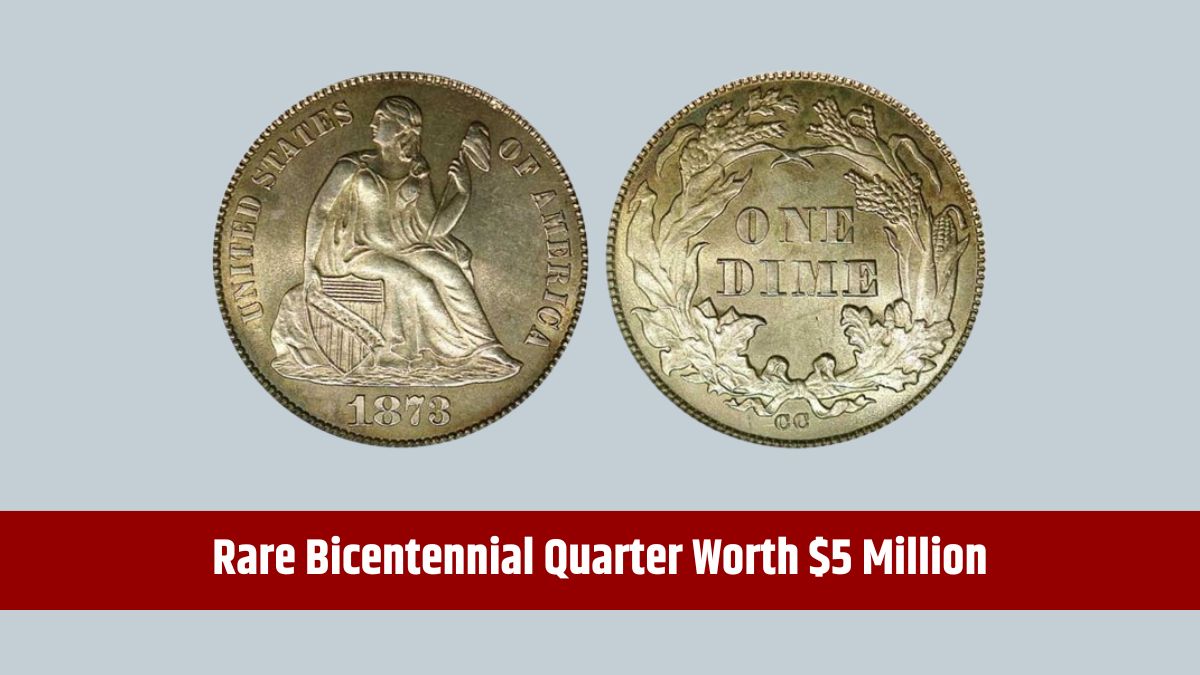Coin collecting offers the excitement of observing hidden gems with immense historical value. Among the rarest coins are two highly coveted dimes and a unique Bicentennial quarter, each valued at an astonishing $5 million. Their extraordinary value stems from a combination of historical significance, rarity, and minting errors. Let’s look into the details of these elusive coins.
1894-S Barber Dime
The 1894-S Barber Dime is one of the most famous coins in U.S. numismatic history. With only 24 coins minted, and just nine known to exist today, its rarity is virtually unmatched. This dime was produced in the San Francisco Mint and is part of the Barber coinage series designed by Charles E. Barber, the Chief Engraver of the U.S. Mint at the time.
What makes this dime so valuable is not only its rarity but also the mystery surrounding its limited mintage. Some believe the coins were minted as a favor to a wealthy banker, while others suggest they were created for a special proof set intended for collectors. Regardless of the story, the surviving 1894-S Barber Dimes are worth $5 million due to their scarcity and the fascinating history they carry.
1873-CC No Arrows
The 1873-CC No Arrows Liberty Seated is another piece of American numismatic history with a staggering value of $5 million. Minted in Carson City, Nevada, less than ten of these dimes are believed to have survived. The “No Arrows” variety refers to the lack of small arrows on either side of the date, indicating a coin produced before the Coinage Act of 1873.
This Act changed the weight of silver coins, leading to the recall and melting down of most of these dimes. Only a few managed to escape this fate, making the 1873-CC No Arrows Dime incredibly rare. The survivors are now considered national treasures, reflecting both the history of American currency and the rich legacy of the Carson City Mint.
Bicentennial Quarter
The 1976 Bicentennial Quarter was issued to commemorate the 200th anniversary of American independence. While most of these coins are common, a few were struck with a unique minting error known as the double die obverse. This error occurs when the die used to stamp the coin is misaligned, resulting in a doubled image on the front side of the coin.
Collectors highly prize this variant because of its rarity and the fact that it emerged from such a significant historical moment—the Bicentennial celebration. Even though millions of Bicentennial quarters were produced, finding a double die obverse version is like finding a needle in a haystack. With a valuation of $5 million, this error coin has become a prized possession for collectors.
Significant
What sets these coins apart is their extreme rarity and historical significance. Minting errors and production limitations have given them an almost mythical status in the coin collecting world. The small number of surviving specimens, coupled with the stories behind their creation, add to their allure. Additionally, their high auction prices reflect the strong demand among collectors for unique and historically important pieces.
| Coin Type | Estimated Value | Quantity Remaining |
|---|---|---|
| 1894-S Barber Dime | $5 million | 9 |
| 1873-CC No Arrows Liberty Seated Dime | $5 million | <10 |
| 1976 Bicentennial Quarter (Double Die) | $5 million | Very Few |
For collectors, owning one of these coins means holding a piece of history, a rare artifact that connects the present with the past. Whether it’s the story of a mysterious banker, the impact of a legislative change, or a minting error, these coins offer more than just monetary value—they offer a glimpse into the rich and fascinating world of U.S. currency.
Though most of us won’t find these treasures in our change jars, their existence fuels the dreams of coin collectors everywhere. With values reaching $5 million, these rare dimes and quarters are truly numismatic legends.
FAQs
How rare is the 1894-S Barber Dime?
Only nine are known to exist, making it extremely rare.
Why is the 1873-CC No Arrows Dime so valuable?
Most were melted down, leaving fewer than 10 surviving examples.
What is a double die obverse quarter?
It’s a minting error where the coin’s front design is stamped twice.
How many Bicentennial double die quarters exist?
Only a handful are known, making them incredibly rare.
Why were the arrows added to the 1873 dimes?
They marked a change in the coin’s weight after the Coinage Act of 1873.
